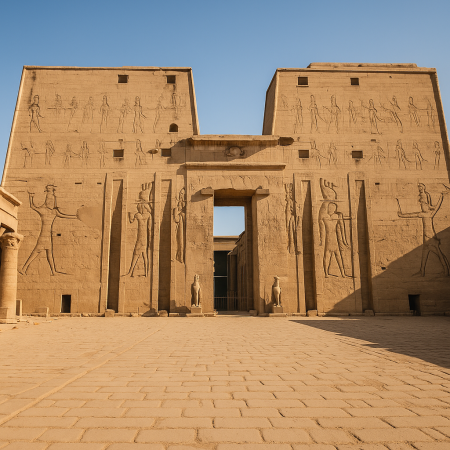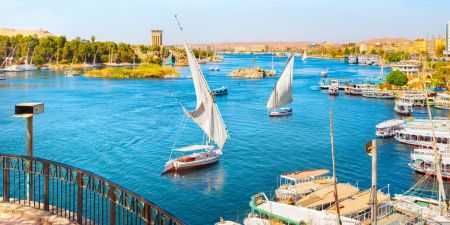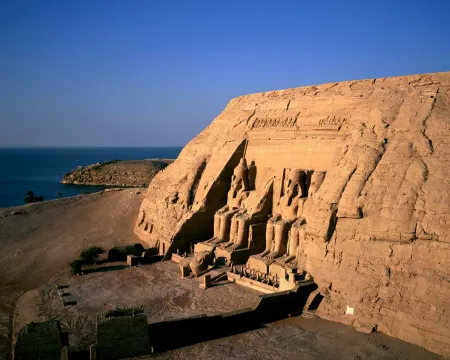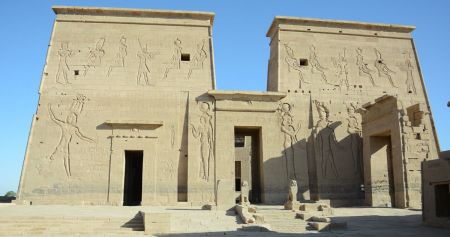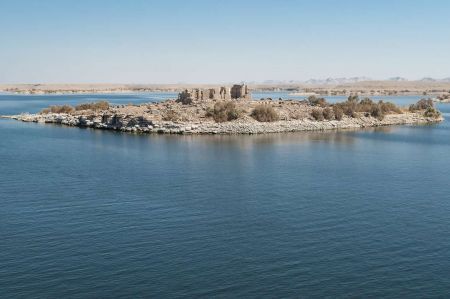Elephantine Island : The Gem of the Nile in Aswan

Nestled in the heart of the Nile River in Aswan, Elephantine Island is one of Egypt’s most captivating historical and cultural sites. Once the southernmost border of ancient Egypt, this island served as a strategic and religious hub for thousands of years. Today, it offers visitors a rare combination of ancient ruins, Nubian villages, and panoramic Nile views—all in one serene destination.
Its name is believed to derive from the island's resemblance to an elephant tusk, or from its historical role as a key ivory trading center. With roots dating back to the Early Dynastic Period, Elephantine was not only a frontier fortress but also home to one of the oldest known nilometers and an important sanctuary dedicated to the god Khnum.
Historical Significance of Elephantine Island
A Fortress of Egypt’s Southern Border
Elephantine Island was ancient Egypt's first line of defense and trade in the south. It hosted a powerful garrison, customs stations, and temples that regulated trade routes and cultural exchanges with Nubia and regions beyond. Its location made it vital for controlling access to Upper Egypt.
The Temple of Khnum
The island’s most prominent temple was dedicated to Khnum, the ram-headed god of the Nile’s source and creator of human life on a potter’s wheel. Built and expanded through various dynasties, the temple complex includes remains from the New Kingdom and Greco-Roman periods, showcasing layers of religious devotion.
Nilometer of Elephantine
One of the oldest and best-preserved nilometers in Egypt is found here. Used to measure the Nile’s water levels and predict annual flooding, it was essential for managing agriculture and taxation. The Elephantine nilometer, carved into stone and marked with ancient inscriptions, remains a symbol of early scientific advancement.
Archaeological Discoveries and the Aswan Museum
Ongoing Excavations
Elephantine Island has been the site of continuous excavations by German and Swiss archaeological teams. They have uncovered ancient temples, shrines, houses, pottery, and inscriptions that paint a vivid picture of life on the island across millennia.
Aswan Museum on the Island
Located on the southern tip of the island, the Aswan Museum houses many of the artifacts uncovered from Elephantine. Visitors can explore statues, tools, coins, and models of the island in different eras. The museum complements the open-air ruins with detailed context and historical insights.
Book unforgettable journeys on the Best Nile River Cruises
Nubian Culture and Modern Life
The Nubian Villages
Two thriving Nubian villages—Siou and Koti—exist on the island today. With their colorful homes, hospitality, and traditional crafts, they offer a living cultural experience. Visitors can interact with locals, sample authentic Nubian cuisine, and shop for handmade jewelry and textiles.
Life Between Past and Present
Unlike many archaeological sites, Elephantine is still inhabited. Locals coexist with ancient ruins, giving the island a unique atmosphere where the past and present flow together along the Nile’s current.
Attractions and Activities on Elephantine Island
Boat Tours and Nile Views
Felucca rides to Elephantine offer breathtaking views of Aswan’s landscape. Once on the island, the lush greenery, swaying palms, and quiet paths invite exploration by foot.
Ruins of Abu and the Satet Temple
Besides Khnum’s temple, visitors can explore the Temple of Satet—goddess of the Nile flood and protector of Egypt’s southern frontier. The ruins of Abu, the island’s ancient name, include granaries, shrines, and administrative buildings.
How to Visit Elephantine Island
Getting There
Elephantine Island is accessible by a short felucca or motorboat ride from Aswan’s east bank. Boats run frequently, and private tours are available for a more personalized experience.
Entry and Access
The island itself is free to explore, but entry to the archaeological site and museum may require a ticket. Guided tours are highly recommended to fully appreciate the depth of its history.
Conclusion: A Microcosm of Egypt’s Heritage
Elephantine Island is more than just a historical site—it’s a living museum where ancient temples, Nile rituals, and Nubian traditions coexist. It encapsulates the spirit of Upper Egypt: resilient, spiritual, and deeply connected to the Nile. Whether you're an archaeology enthusiast or a cultural traveler, a visit to Elephantine Island offers a tranquil yet profound journey into Egypt’s rich past and vibrant present.
FAQs About Elephantine Island
Why is Elephantine Island important?
It was Egypt's southern frontier, a religious center, and a key trade post, home to ancient temples, a nilometer, and one of the oldest settlements in Upper Egypt.
What can I see on Elephantine Island?
Visitors can explore ancient ruins, the Temple of Khnum, the Nilometer, the Aswan Museum, and traditional Nubian villages.
Can you stay on Elephantine Island?
Yes, there are guesthouses and small hotels run by Nubian families offering comfortable stays and local hospitality.
How long does it take to visit Elephantine Island?
You can explore the main sites in 2–3 hours, but staying longer allows you to enjoy the peaceful environment and Nubian culture more fully.
Is Elephantine Island suitable for families or children?
Absolutely. It’s a safe, scenic, and educational destination ideal for travelers of all ages.



